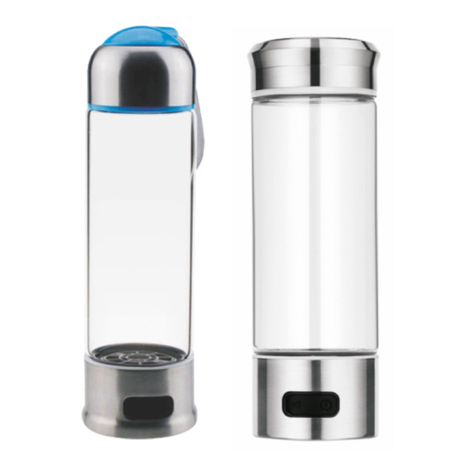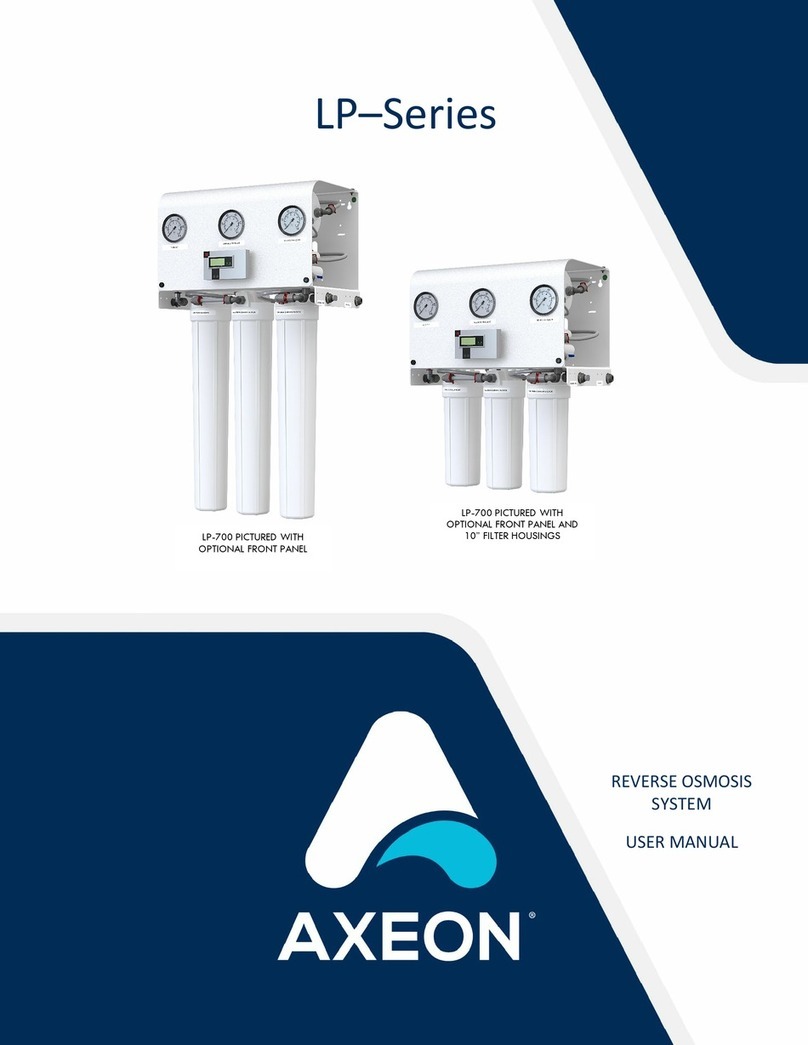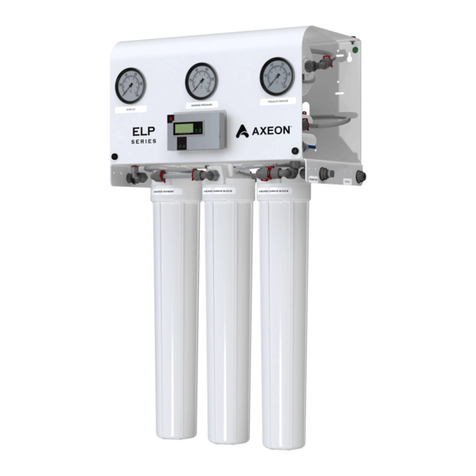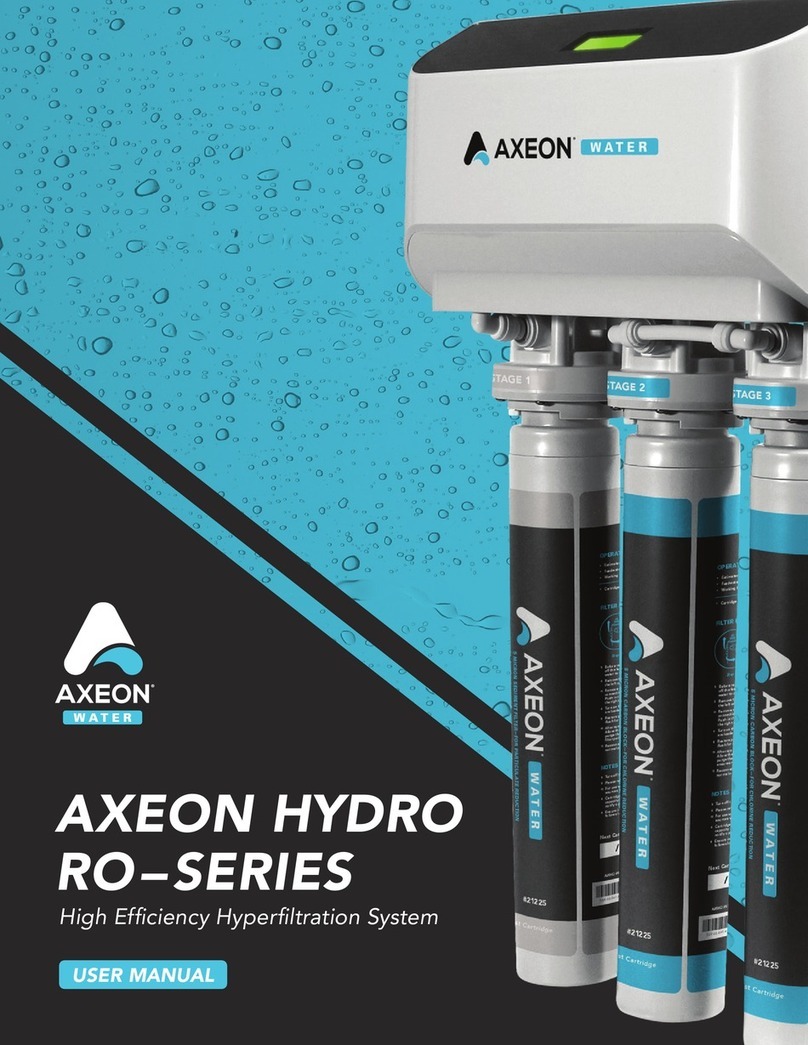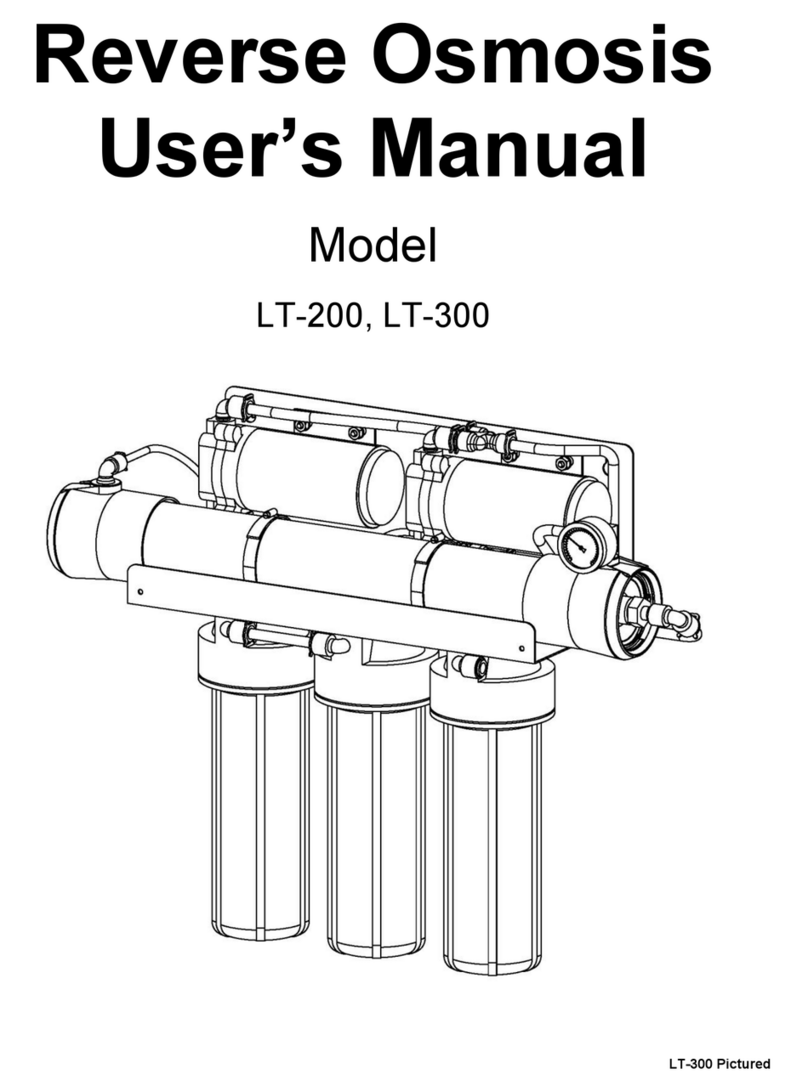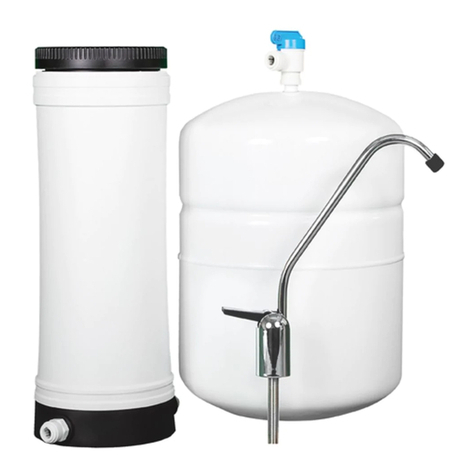
LT – Series User’s Manual
MKTF-210
Your LT-Series
system is a durable piece of equipment which, with proper care, will last
for many years. This User’s Manual
troubleshooting details vital to the sustained performance of your system.
The test results which are included with this User’s Manual indicate your system’s
permeate (product) and
If your system is alter
ed at the site of operation
pl
ease contact your local dealer or distributor to determine the proper recovery for your
application.
NOTE: IN ORDER TO MAINTAIN
OPERATING LOG MUST BE MAINTAINED AND COPIES WILL NEED TO BE SENT TO
YOUR LOCAL DEALER OR DISTRIBUTOR FOR REVIEW.
SYSTEM, THIS USER’S MANUAL MUST BE READ AND FULLY UNDERSTOOD. KEE
THIS AND OTHER ASSOCIATED INFORMATION FOR FUTURE REFERENCE AND
FOR NEW OPERATORS OR QUALIFIED PERSONNEL NEAR THE SYSTEM
SAFETY
The Safety section of this User’s Manual outlines the various safety headings used
throughout this manual’s text and are enha
NOTE: INDICATES STATEMENTS THAT PROVIDE FURTHER INFORMATION AND
CLARIFICATION.
CAUTION: INDICATES STATEMENTS THAT ARE USED TO IDENTIFY
CONDITIONS OR PRACTICES THAT COULD RESULT IN EQUIPMENT OR OTHER
PROPERTY DAMAGE.
WARNING: INDICATES STATEMENTS THAT ARE USED TO IDENTIFY
CONDITIONS OR PRACTICES THAT COULD RESULT IN INJURY OR LOSS OF LIFE.
FAILURE TO FOLLOW WARNINGS COULD RESULT IN SERIOUS INJURY OR EVEN
DEATH.
4
INTRODUCTION
system is a durable piece of equipment which, with proper care, will last
for many years. This User’s Manual
outlines installation, operation
troubleshooting details vital to the sustained performance of your system.
The test results which are included with this User’s Manual indicate your system’s
waste) test results.
ed at the site of operation
or if the feed water conditions
ease contact your local dealer or distributor to determine the proper recovery for your
NOTE: IN ORDER TO MAINTAIN
OPERATING LOG MUST BE MAINTAINED AND COPIES WILL NEED TO BE SENT TO
YOUR LOCAL DEALER OR DISTRIBUTOR FOR REVIEW.
OPERATING OR SERVICING THE
SYSTEM, THIS USER’S MANUAL MUST BE READ AND FULLY UNDERSTOOD. KEE
THIS AND OTHER ASSOCIATED INFORMATION FOR FUTURE REFERENCE AND
FOR NEW OPERATORS OR QUALIFIED PERSONNEL NEAR THE SYSTEM
The Safety section of this User’s Manual outlines the various safety headings used
throughout this manual’s text and are enha
nced and defined below:
NOTE: INDICATES STATEMENTS THAT PROVIDE FURTHER INFORMATION AND
CAUTION: INDICATES STATEMENTS THAT ARE USED TO IDENTIFY
CONDITIONS OR PRACTICES THAT COULD RESULT IN EQUIPMENT OR OTHER
WARNING: INDICATES STATEMENTS THAT ARE USED TO IDENTIFY
CONDITIONS OR PRACTICES THAT COULD RESULT IN INJURY OR LOSS OF LIFE.
FAILURE TO FOLLOW WARNINGS COULD RESULT IN SERIOUS INJURY OR EVEN
06/12
system is a durable piece of equipment which, with proper care, will last
maintenance and
troubleshooting details vital to the sustained performance of your system.
The test results which are included with this User’s Manual indicate your system’s
or if the feed water conditions
change,
ease contact your local dealer or distributor to determine the proper recovery for your
WARRANTY, AN
OPERATING LOG MUST BE MAINTAINED AND COPIES WILL NEED TO BE SENT TO
SYSTEM, THIS USER’S MANUAL MUST BE READ AND FULLY UNDERSTOOD. KEE
P
THIS AND OTHER ASSOCIATED INFORMATION FOR FUTURE REFERENCE AND
FOR NEW OPERATORS OR QUALIFIED PERSONNEL NEAR THE SYSTEM
.
The Safety section of this User’s Manual outlines the various safety headings used
NOTE: INDICATES STATEMENTS THAT PROVIDE FURTHER INFORMATION AND
CAUTION: INDICATES STATEMENTS THAT ARE USED TO IDENTIFY
CONDITIONS OR PRACTICES THAT COULD RESULT IN EQUIPMENT OR OTHER
WARNING: INDICATES STATEMENTS THAT ARE USED TO IDENTIFY
CONDITIONS OR PRACTICES THAT COULD RESULT IN INJURY OR LOSS OF LIFE.
FAILURE TO FOLLOW WARNINGS COULD RESULT IN SERIOUS INJURY OR EVEN












